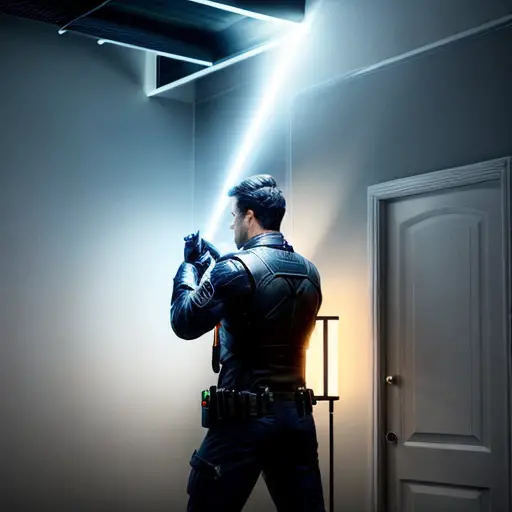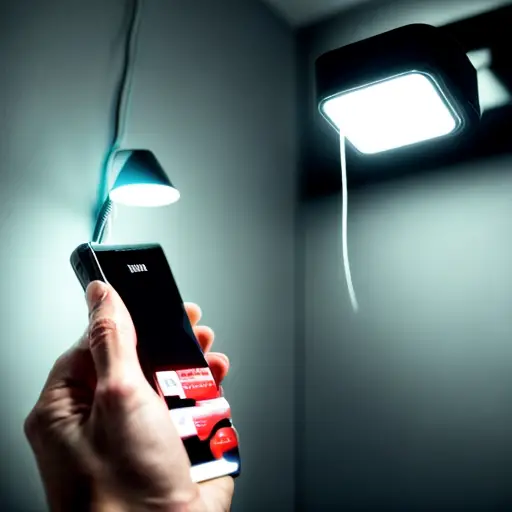Understanding the Basics of Home Security Systems
Alright, folks, let's dive into the fascinating world of home security systems! Now, I know what you're thinking, 'Wiring? Do it myself? Are you kidding me?' But fear not, my friends, because understanding the basics of wiring a home security system can be as easy as finding your way out of a maze made by a toddler. First things first, grab your trusty toolbox and put on your DIY superhero cape. Remember, safety first! Now, imagine your home as a giant puzzle, and the wires as the pieces that bring it all together. It's like playing an intense game of connect-the-dots, except instead of a cute little bunny, you get a fortress of protection. So, roll up your sleeves, channel your inner electrician, and let's get those wires dancing to the tune of security!
Planning and Designing Your DIY Home Security System
An interesting fact about wiring a DIY home security system is that it can actually be a relatively simple and cost-effective process. With advancements in technology, wireless security systems have become increasingly popular, eliminating the need for complex wiring installations. These systems utilize wireless sensors, cameras, and control panels that can be easily installed and connected without the need for extensive wiring knowledge. This makes it more accessible for homeowners to set up their own security systems, saving them money on professional installation fees while still ensuring the safety and protection of their homes.
Alright, my fellow DIY enthusiasts, let's talk about planning and designing your very own home security system! Now, I know it may sound intimidating, but fear not, because we're about to embark on a journey that's more thrilling than a rollercoaster ride. Picture this: you, armed with a blueprint of your home, a cup of coffee (or tea, if that's your jam), and a determined look on your face. It's time to unleash your inner Sherlock Holmes and strategically place those wires like a mastermind plotting the perfect heist. Remember, every nook and cranny of your humble abode deserves protection, so let's get those wires snaking through your walls like undercover agents on a top-secret mission. So grab your pen, sketch out your plan, and let's wire up a security system that would make James Bond proud!
Step-by-Step Guide to Wiring Your Home Security System

Alright, my fellow DIY warriors, get ready to embark on a thrilling adventure as we dive into the step-by-step guide to wiring your very own home security system! Now, before we begin, let's gather our tools: wire cutters, a screwdriver, electrical tape, and a whole lot of determination. Remember, this is not for the faint of heart, but with a little patience and a sprinkle of humor, we'll have your home fortified like a medieval castle in no time.
Step 1: Plan Like a Mastermind First things first, grab a pen and paper (or your trusty smartphone) and sketch out a blueprint of your home. This will be your treasure map, guiding you through the labyrinth of wires. Identify the key areas you want to secure, such as entry points, windows, and valuable possessions. Now, channel your inner Sherlock Holmes and strategize the best locations for your sensors, cameras, and control panels. Remember, the goal is to create a web of protection that even Spider-Man would envy.
Step 2: Lay the Foundation Now that you have your plan in hand, it's time to roll up those sleeves and get down to business. Start by turning off the power to the areas where you'll be working. Safety first, my friends! Next, locate your control panel and connect it to a power source. This will be the brain of your security system, so make sure it's in a central location. Now, it's time to run those wires like a marathon champion. Carefully thread them through walls, ceilings, and floors, making sure to secure them with clips or staples along the way. Remember, neatness counts, so keep those wires organized and tidy.
Step 3: Sensor Sensation Now that the foundation is set, it's time to sprinkle some magic with your sensors. These little heroes will detect any unwanted intruders and send a signal to your control panel. Start by placing door and window sensors at strategic entry points. Remember, these sensors should be discreet, so the bad guys won't even know they're there. Next, let's add some motion sensors to the mix. These little marvels will detect any suspicious movements and alert you to potential threats. Place them in high-traffic areas, but be mindful of pets and pesky houseplants that might trigger false alarms.
Step 4: Camera Action No home security system is complete without a few trusty cameras. Now, I'm not talking about Hollywood-level production here, but a few well-placed cameras can make all the difference. Start by identifying the areas you want to monitor, such as your front porch, backyard, or that secret stash of chocolate in the pantry (we won't judge). Mount your cameras in strategic locations, making sure they have a clear view of the action. Connect them to your control panel, and voila! You're now the director of your very own home security movie.
Step 5: Test and Celebrate Congratulations, my DIY champions! You've successfully wired your home security system like a pro. But before you kick back and relax, it's time for the final step: testing. Arm your system, trigger the sensors, and make sure everything is working like a well-oiled machine. Adjust any settings, fine-tune the angles of your cameras, and give yourself a pat on the back. You've just transformed your humble abode into a fortress of protection, all with your own two hands.
So, my friends, go forth and conquer the world of DIY home security systems. Remember, with a little planning, a dash of creativity, and a whole lot of determination, you can wire up a system that would make MacGyver proud. Happy wiring!
Troubleshooting and Testing Your DIY Home Security System
Fun fact: Did you know that when wiring a home security system yourself, you can use color-coded cables to make the process easier? Most security system manufacturers follow a standard color code for their cables, making it simpler for DIY enthusiasts to connect the right wires. For instance, red cables are typically used for power, black for ground, yellow for video, and green for audio. This color-coded system not only helps prevent confusion but also adds a touch of organization and fun to your DIY home security project!
Alright, my fellow DIY superheroes, we've come to the final chapter of our home security system adventure: troubleshooting and testing. Now, I know what you're thinking, 'What if something goes wrong?' Fear not, my friends, because we're about to tackle any obstacles that come our way. First things first, double-check all your connections and make sure everything is securely fastened. If a sensor or camera isn't working, check the wiring and ensure it's properly connected to the control panel. Now, it's time to put on your detective hat and test your system. Arm your system, trigger the sensors, and make sure the alarms sound and the cameras capture the action. Adjust any settings, fine-tune the angles, and don't forget to celebrate your DIY victory. Remember, troubleshooting is just another puzzle to solve, and with your DIY skills, there's nothing you can't conquer. Happy testing, my friends!

